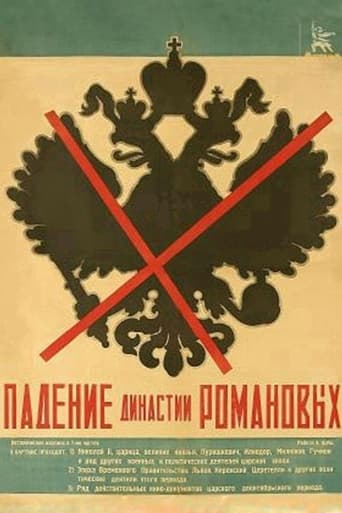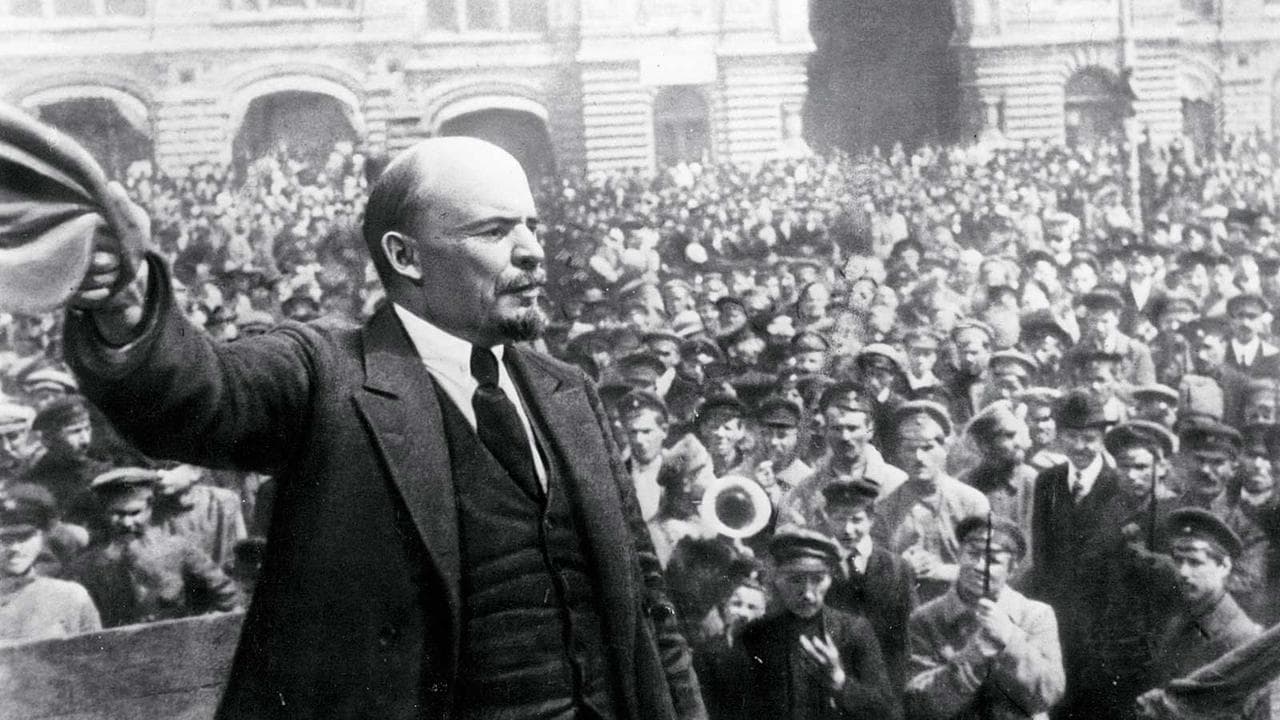vladislavmanoylo
The strength of The Fall of the Romanov Dynasty is its collection of significant historical scenes, and that is probably enough to enjoy the movie despite its half-hearted attempts at delivering political and social statements. Despite what the title of the movie would have you believe, this is not about the Romanov Dynasty, or rather it is only incidentally about the Romanov Dynasty. What this movie is about is the tumultuous time of human history in and around the World War, the Great War, the first war of its kind. It's a subject with such weight that it is best expressed through images and motion, making it ideal for a silent film.An actual documentary of the Romanov Dynasty would need additional context to express its point, but hundreds of soldier marching across a crowd many times that size, or an enormous ship sinking, are both scenes that can be understood without narration. The bulk of the film is a collage of these sorts of scenes, and choosing to watch that is sufficient reason to watch the film, but unfortunately there's more. The film decided it needed a message and motive, and the one it chose is the evils of luxury and capitalism and they're disregard for the common man. For a person that subscribes to the ideology some of the imagery can incite righteous anger, for a person who doesn't some of the phrases used feel a lot like propaganda In either case the effect feels inconsequential when compared to the other subject of the film, similar to how the gravity of the moon is important not nearly as relevant as the gravity of the earth.TL;DR: The movie has great historical footage of war and some of the important characters involved, but also scenes of workers, capitalists, estates, government officials, etc. that appear unnecessary and maybe even unwanted.
maria m
The fall of the Romanov Dynasty (1927), directed by Esfir Shub, is a documentary narrative constructed entirely of newsreel footage before the revolution. Her use of captions makes the film a lot easier for the audience to fully grasp the various scenes, which are presented to us in a sort of chronological order. At the beginning she provides us with a fairly obvious juxtaposition of the lives of the Imperial family and the poor working class. Depicting the gap between the lower class and the upper class, which only seems to be widening. A scene that seemed to especially show this was when nobles were having a tea party and once they were finished the workers would come in and clean up. There's a hint of bitter satire that can be felt throughout the entire film as an impending revolution is approaching, which seems to be unavoidable. This war that didn't seem to be supported by the general public and only benefited the Imperial family and his loyal subjects, which consisted of senators, civil servants, and the head of press. Had loss all support after the mass destruction leading to a revolt all because of the neglect from the Tsar and his ministers.
dminkin
I knew it was coming shortly
the answer I couldn't bear to see. The Bolsheviks featured in history. To the victors go the glory, even in the face of war and death. Well that's the ending, which comes slinking in to corrupt what would have been a legitimate effort to provide a synopsis of the preceding 20 years accompanied by both reasonably relevant and appropriate visual material. But don't suppose there was any nuance, oh no, the presentation of events both followed a linear progression and were manufactured to fit a revolutionary mindset - though their depiction under the eye of the camera leaves no room for bias. By the first half of the film it is sickening to watch as ever more of the officer corps and nobility flood the screen in their gilded uniforms of either white or black. While this effect is produced partly by sheer repetition (I could not help but close my eyes at one point and instead focus on Bach's Praeludium I which was playing in the background), all the manicured and clean faces of the gentlemen and ladies are sharply contrasted with the dirty peasants and factory workers working in the fields, plants, mines, and quarries while living in hovels. There is no denying that the divide between the upper classes and the common man is stark. The confidence that inspires in the ability and judgment of the Tsar to order the mass mobilization of the "cannon fodder" is correspondingly poor. The reality of war, through the bitterness of winter, featuring the explosions of artillery, the manufacturing of deadly weaponry, and the consequent death of millions, leads to the obvious conclusion: War must stop, and the Tsar must fall.And so it was that in about 5 minutes of film the storming of the palace and abdication of Nicholas II was completed, power transferred, and regime undone. The Fall of the Romanov Dynasty, title of the film, is complete. We could have ended there, the next months of the story left to another documentary, but Esfir Shub decided to press on just as the war did even after February's revolution. The people are mustered and Lenin is seen, figurehead, all chanting "Bread, Peace, Freedom," the clarion call of the Bolsheviks.
FreeMM
Fascinating collection of footage from the years 1913-17 focusing on the Russian Revolution. With an introduction by a Russian historian and cultural expert, it exposed a number of myths about the revolution and in particular, the Bolsheviks.With this gentleman providing a commentary over the footage that's happening and explaining the propaganda behind not only this film, but the three films that I'd seen by Eisentein, presenting them in a completely different light. Filmwise it wasn't anything special, however the informed commentary was riveting and helps you to understand a bit more about what actually happened, even if it only touches the surface.Watched in conjunction with Eisenstein's October 1917, Strike and Battleship Potemkin, these are essential viewing.


 AD
AD



